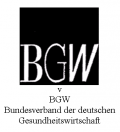CJEU on likelihood of confusion between signs with letter sequence and descriptive combination of words
24-10-2015 Print this page
TRADEMARK LAW
In the Securvita case, there is no general rule for assessing the ancillary nature of a sequence of letters which reproduces the first letter of each of the words in the word combination with which it is juxtaposed
"Consequently, the statement in paragraph 38 of that judgment, which is referred to by the national court, that the letter sequence which reproduces the initial letters of the words comprising that word combination occupies only an ancillary position in relation to the word combination, must be read in that way and cannot be interpreted as being the expression of a general rule for assessing the ancillary nature of a sequence of letters which reproduces the first letter of each of the words in the word combination with which it is juxtaposed.
33. That statement simply makes clear, for the purposes of the application of the grounds for refusal set out in Article 3(1)(b) and (c) of Directive 2008/95, that a letter sequence, even if it is distinctive in itself, may be descriptive when it is reproduced in a composite mark in which it is combined with a descriptive principal expression of which it is perceived to be the abbreviation, which must be determined on a case-by-case basis."
The relevant public’s perception varies according to whether what is being assessed is the descriptiveness of a sign or the existence of a likelihood of confusion.
"As the Advocate General stated at point 29 of his Opinion, whereas, in assessing the descriptiveness of a sign, attention is focused on the mental processes which may lead to relationships being established between the sign or its various components and the goods/and or services concerned, in assessing the likelihood of confusion, the examination relates to the processes by means of which the sign is remembered, recognised and recalled and to associative mechanisms."
In the case of identical or similar goods and services, there may be a likelihood of confusion on the part of the relevant public between an earlier mark of average distinctiveness, and a later mark which reproduces that letter sequence and which is added a descriptive combination of words, with the result that that sequence is perceived by that public as the acronym of that combination of words.
"Accordingly, in the circumstances of the main proceedings, the national court will have to examine, among other factors, whether the links which the relevant public may establish between the letter sequence and the word combination, in particular the possibility that the former may be perceived as an acronym of the latter, are such that that sequence may be perceived and remembered separately by the relevant public in the later mark. Likewise, it will, if necessary, have to assess whether the elements of which the later mark consists, taken as a whole, form a separate logical unit which has a different meaning from that of those elements taken separately.
Consequently, the answer to the question referred is that Article 4(1)(b) of Directive 2008/95 must be interpreted as meaning that, in the case of identical or similar goods and services, there may be a likelihood of confusion on the part of the relevant public between an earlier mark consisting of a letter sequence, which is distinctive and is the dominant element in that mark of average distinctiveness, and a later mark which reproduces that letter sequence and to which is added a descriptive combination of words, the initial letters of which correspond to the letters of that sequence, with the result that that sequence is perceived by that public as the acronym of that combination of words."
IPPT20151022, CJEU, BGW v Scholz
C-20/14 - ECLI:EU:C:2015:714

















